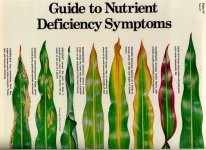The way I remember NPK on fertilizer is Up, Down and all around.
N works on the growing part of the plant above ground. With corn after it's about a foot tall it craves N.
Phosphorus (P) works for health of the roots. Tubes such as carrots, beets, potatoes, are high phosphorus users. A lot of soils usually low in P because of it has a tendency to leech. A soil with a good % organic matter and in cover crops will help hold the phosphorus in place when not in corn. As your cover crop decomposes it will go and reintroduce the P to your crop instead of leaching and getting into the watershed.
K (Potassium) Is for overall general health of the plant to prevent it from diseases and stress such as short term drought. Generally K can hold for several years and of the three I would consider the least critical.
As for application. Generally if you are running a planter with fert. hopper you wan't to go with a fert with low N. Usually something like 6-24-24 is used. I've used up to 19-19-19 but have to be careful on the application because too much N side dressed to young plant can burn and stunt their growth. Seedlings spend most of there energy going down initially so P (down) is most utilized at this stage. Once a foot tall or so it's N that they crave and the Urea 46-0-0 is applied with a cultivator and a side dresser. This is generally the way things are done with conventional corn since after cultivation and N application the corn will grow fast enough to shade out any weeds that might compete with your corn for the N.
An alternative is you can apply all the fertilizer and shallow till under prior to corn planting. For me I have had really good results spreading 50# Trip 19 and 50# 46-0-0 per 0.5 acre, cover with shallow dirt, wait about 10 days or weeds to emerge than spray with roundup and than plant my corn. Conventional corn can be used because it has zero residual effect on seeds and only kills actively growing plants. If you spray after the corn has sprouted than a Roundup Ready variety corn must be used.
I'm by no means an expert on corn or fertilizers but trying to share what I know and what has worked for me but everybody's situation/soil is different.
Here's a visual aid to be able to tell what corn is deficient in by looking at it's leaves.

